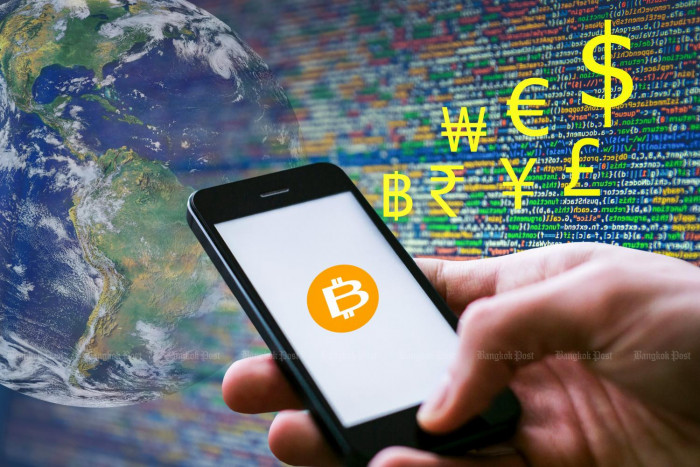The vast majority of the massive metal towers the city commissioned to help low-income neighborhoods access high-speed 5G Internet still lack cellular signal equipment — more than two years after hundreds of structures began sprouting up across the five municipalities.
Only two of the nearly 200 Link5G towers installed by technology firm CityBridge since 2022 have been equipped with 5G equipment, company officials said. Delayed installations and cooling enthusiasm around 5G technology have discouraged carriers like Verizon from using the towers to build their networks, experts say. The firm has only one agreement with a single telecommunications company to provide high-speed Internet, hampering its efforts to increase cellular connectivity across the city.
The 32-foot-tall structures, which resemble giant tampon applicators jutting out of the sidewalk, offer the same services as LinkNYC’s electronic billboards that appeared around the city in 2016. They were also installed by CityBridge. Both original Link kiosks and 5G towers offer free limited-range Wi-Fi, charging outlets and a tablet to connect users to city services. Data shared by the company shows that 16 million people have used the internet at the kiosks since 2016, and the attached tablets are used to call city services thousands of times each month.
But unlike LinkNYC’s kiosks, each new tower is filled with a 12-foot-tall cylindrical mesh room containing five empty racks reserved for companies like Verizon and T-Mobile to store the equipment they use to transmit Internet service. 5G with high speed for payment. customers.
CityBridge officials acknowledge that rollout of the 5G expansion has been slow, mirroring a similar experience the company had with the kiosk installation nearly a decade ago.
Margaux Knee, chief administrative officer for the LinkNYC program, noted that the towers still serve other needs, such as serving as Wi-Fi hotspots.
“While the mobile service is built – which is taking longer than we wanted, but it’s happening – all other services are still in place,” she said.
The city’s Office of Technology and Innovation once touted the megastructures as essential tools “to bridge the digital divide” in “neighborhoods that will benefit most from free, high-speed Internet, mobile broadband and fiber infrastructure.” In addition to free Wi-Fi, the towers will also boost cell networks for paying customers in neighborhoods that cell companies would otherwise neglect in favor of wealthier sections of Manhattan, the agency said previously.
The lack of reliable high-speed Internet access in New York City’s lower-income communities came to a head during the pandemic as the city’s school system struggled to get nearly 1 million students online for distance education. About 40% of all households had no mobile or home broadband access in 2020, according to the city’s Internet Master Plan released that year.
Internet inequalities still persist. Nearly 1 million New York City households lost access to key federal broadband subsidies last month that help pay for the services.
So far, however, major carriers are not using the towers.
Parent company Spectrum Charter Communications and Altice, which owns Optimum, both told Gothamist that they are not leasing space on Link5G smart towers.
“Spectrum does not have equipment on the LinkNYC 5G towers and uses other technologies to provide its cellular service to New Yorkers,” said Charter Communications spokesman Don Kaplan.
Spokesmen for T-Mobile and Verizon declined to comment on whether they are leasing space or plan to lease space at Link5G kiosks.
Leasing delays for new Link5G towers are happening at the same time as telcos are scaling back their 5G expansion plans, meaning there is no guarantee operators will start leasing towers, according to industry experts. The fifth generation cellular network offers faster speeds but requires a denser network of signal boosters.
“[Carriers] very quickly found that there was no more revenue to be had,” said computer engineer Henning Schulzrinne, a professor of engineering and computer science at Columbia University and a former senior official at the Federal Communications Commission.. “Technology has taken a different turn for economic reasons than anticipated.”
He said the slow rollout of the Link5G program corresponds to an industry-wide retreat from 5G deployment. Firm Crown Castle, one of the nation’s largest developers of wireless internet infrastructure, recently announced it was removing thousands of 5G signal boosters it had planned to install around the country.
Schulzrinne questioned why CityBridge would erect hundreds of towers without an agreement with at least one company to lease them.
“Building those to spec seems kind of pointless, or at least risky,” he said. “Why wouldn’t you have a tenant in place before you start working on one of these rigs, especially since they’re not particularly popular?”
Whether telecom companies start using the towers depends on how much CityBridge plans to charge them, said Alphonso Jenkins Jr., a former deputy commissioner for telecom planning at the Department of Information and Communications Technology, who has since been subpoenaed by Office of Technology and Communication. Innovation.
“Operators have other choices at a lower cost,” such as roofs and signs, Jenkins said.
CityBridge officials say they anticipate signing deals with an additional telecom company “very soon,” with more to follow eventually. Executives previously told the City Council they intended to begin leasing the space to carriers by the end of 2023.
Knee declined to say which telecom company had signed on, which company was testing its equipment on the two Link5G towers, how much operators are paying or where the two active structures are located.
Knee blamed the rent delays on lengthy red tape. She said the towers could be used to store equipment for future technology for the ever-evolving telecommunications industry if operators continue to back away from 5G.
And while preservationists and community groups have scrutinized the ominous-looking structures, a survey commissioned by CityBridge found that more than three-quarters of New Yorkers say they would support “smart poles” in their neighborhoods.
Gothamist visited two Link5G towers in the Morris Heights neighborhood of the Bronx on Monday. The new towers are concentrated in the outer boroughs and north of 96th Street in Manhattan in an effort to increase connectivity in neighborhoods with limited internet access. Residents there gave the structures mixed reviews.
Outside a five-storey apartment building on Featherbed Lane, neighbors and delivery workers chatted about a tower with a broken tablet screen. Delivery workers sat on their motorbikes, connected to free Wi-Fi.
But LinkNYC’s original, much smaller kiosks offer the same services, said Angel Medina, an investigator for a law firm.
Medina, 52, called the towers a “waste of space.”
“It’s blocking some of these people’s views right now,” Medina said. “They’re paying high rent as it is now and you just put up a tower that’s useless.”
A few blocks away, Genaro Solis, 51, had a different perspective.
Solis stood next to a tower, covered by two nearby trees, and charged his cell phone. He said he was also using the free Wi-Fi to access Facebook and message his daughter.
“I don’t have to go home and charge my phone, and it’s helpful for me because I can plug it in wherever I am,” Solis said.
When asked about the empty 5G cabinet on top of the structure, he said he was willing to be patient.
“I believe it will take some time before [carriers] they can actually put their equipment up there,” Solis said. “It takes patience. It takes money to take care of these. And my point is, I like them. I actually love them.”
The lack of deals is the latest setback for CityBridge, a multibillion-dollar conglomerate that includes Boldyn Networks and Intersection.
The consortium’s work on 5G infrastructure comes at no cost to the city. Instead, the company pays the city a portion of its advertising-generated revenue each year, according to their franchise agreement.
CityBridge faced bankruptcy in 2019 and failed to meet the escalating annual revenue mandates set out in LinkNYC’s first contract in 2014. The company and the city revised the agreement in 2021 so that CityBridge owes the annual amount much less than 3 million dollars.
Knee said the company will be able to pay its annual obligations to the city even without the added rental income from the telecom companies.
Council member Jennifer Gutiérrez, who chairs the City Council’s technology committee, called the discovery that 5G towers still aren’t providing 5G coverage “disappointing.”
“Every day that passes is another day that a New Yorker is without equal access,” Gutiérrez said in a statement. “I want to see all of CityBridge’s commitments fulfilled.”
Meanwhile, the city’s Office of Technology and Innovation is on the company’s side. Agency spokesman Ray Legendre said they expect the Link5G towers to attract operators willing to lease space for 5G equipment.
“Deploying broad-based broadband infrastructure in New York City is vital to ensuring we have the capacity to meet the needs of New Yorkers and bridge the digital divide in our historically unconnected communities,” said Lezhandre.
The Link5G business model also has its share of defenders among industry experts.
Theodore Rappaport, a professor at NYU’s Tandon School of Engineering and a pioneer in 5G expansion, said carriers want to see the infrastructure actually built before they sign on to lease space inside.
“If you build it, they will come,” he said.
Correction: An earlier version of this story incorrectly described CityBridge’s financial obligation to the city.
#NYCs #massive #Link5G #towers #arent #offering
Image Source : gothamist.com

